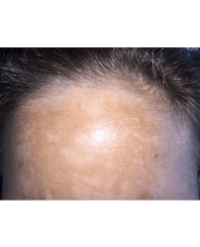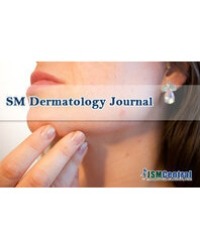Lichen Simplex Chronicus (LSC) is a chronic skin disease characterized by lichenified plaques, which occur as result of constant scratching or rubbing of skin. Pruritus is the predominant symptom that leads to the development of LSC. Frequent pruritus triggers include mechanical irritation, environmental factors, such as heat and sweating, and psychological factors, such as stress and anxiety.
From a psychodermatology point of view, the interruption of the never-ending itch-scratch cycle, which characterizes LSC, is of supreme importance for patient’s recovery. Furthermore, emotional tensions, as seen in patients with anxiety, depression, or obsessive-compulsive disorder, may play a key role in inducing a pruritic sensation, leading to scratching that can become self-perpetuating.
Referral to a psychiatrist or a psychotherapist might be required in many cases. However, this referral could be difficult in daily practice, given the patient’s unwillingness to seek mental health counseling. Therefore, the dermatologist should focus and be able to perform, at least at a very basic level, some easy psychological interventions that would help patients to end with the itch-scratch cycle, while helping the patients to accept the need to seek for mental help.
In this article, we describe easy cognitive behavioral techniques to address the factors that exacerbate and maintain itch-scratch cycle in LSQ patients. Moreover, we stress in the need that dermatologists should be trained in the usage of these techniques in order to help LSQ patients, especially when referral to a psychiatrist is hindered because of the patients’ reluctance of seeking mental help.
Julio Torales1*, Iván Barrios2 , Liz Lezcano3 and Beatriz Di Martino4



